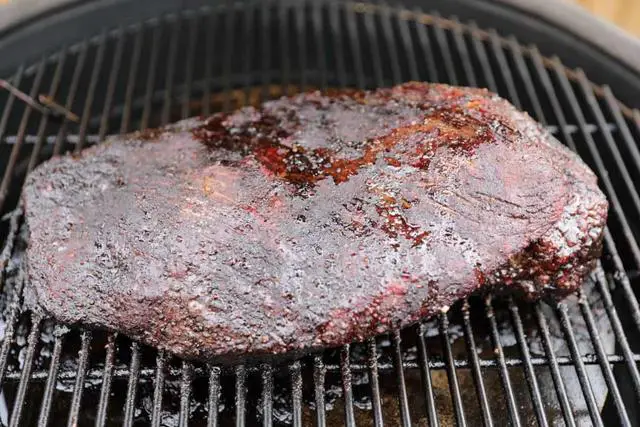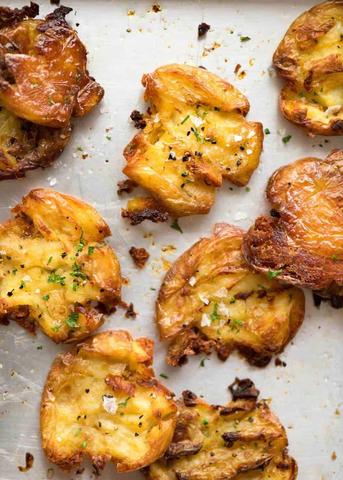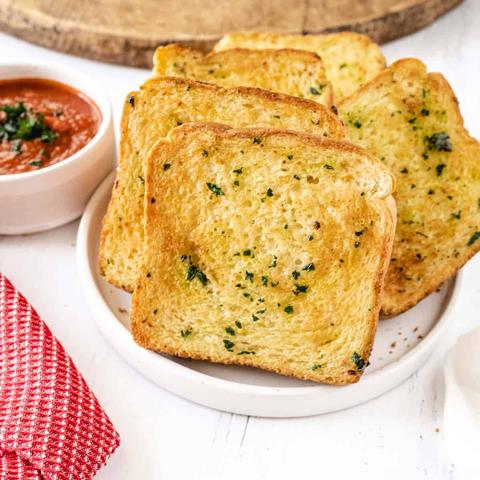
“Unlocking the Perfect Brisket: Boosting Flavor with Post-Wrap Temperature Surge!”
INCREASE TEMP AFTER WRAPPING BRISKET: WHY YOU SHOULD DO IT?
Increasing the temperature after wrapping the brisket is a beneficial cooking technique for several reasons. Firstly, it helps to speed up the cooking time, which can be advantageous if you are short on time or have a tight schedule. By raising the temperature, you can ensure that your brisket cooks more quickly and efficiently.
Another reason to increase the temperature after wrapping is to overcome the stall. The stall refers to a period during the cooking process where the internal temperature of the brisket plateaus, sometimes for several hours. This can prolong the cooking time and make it difficult to achieve the desired level of tenderness. By increasing the temperature, you can break through this stall and continue cooking the brisket.
In addition, increasing the temperature after wrapping can enhance bark formation on the outside of the meat. The bark is a flavorful crust that forms during smoking or roasting and adds texture and taste to the finished brisket. By raising the temperature, you can encourage better bark formation and achieve a more visually appealing and delicious end result.
HOW TO INCREASE TEMP AFTER WRAPPING BRISKET?

Increasing the temperature after wrapping the brisket can be a valuable cooking technique that helps speed up the cooking time, overcome stalls, enhance bark formation, and yield more tender meat. Here are the steps to follow:
1. Wait until the brisket reaches 150-170°F internally: This ensures that the brisket has achieved a sufficient level of tenderness before proceeding.
2. Increase the smoker or oven temperature to around 275°F: Once the desired internal temperature is reached, raise the heat to speed up the cooking process.
3. Monitor the temperature carefully and make adjustments as needed: It’s important to keep a close eye on the temperature to prevent overcooking or drying out of the meat. Adjustments may be necessary to maintain the ideal cooking environment.
4. Timing is crucial: Wrap the brisket at the right time, when it has achieved desired color and bark formation after a few hours of cooking or when internal temperature reaches around 150-170°F.
5. Use high-quality wrap: Choose a food-safe wrap such as butcher paper or heavy-duty aluminum foil. Double-wrapping can provide extra insulation and moisture retention.
6. Seal it properly: Ensure a tight seal when wrapping to prevent steam and moisture from escaping during cooking.
7. Allow for some airflow if using foil: Create a small vent by leaving a small opening or puncturing holes on top of the foil to allow excess steam to escape.
8. Rest after unwrapping: Give the brisket a brief rest after unwrapping to allow juices to redistribute, enhancing flavor and juiciness of the meat.
HOW LONG TO SMOKE A BRISKET AFTER WRAPPING IT?

The smoking time for a brisket after wrapping it can vary depending on several factors such as the size of the brisket and the temperature of your smoker. On average, you can expect to smoke a wrapped brisket for an additional 2 to 4 hours.
However, it’s important to note that monitoring the internal temperature is crucial during this phase. Use a reliable meat thermometer to check the temperature regularly to ensure it reaches the desired level. The internal temperature should reach around 204°F before removing the brisket from the smoker.
Keep in mind that these time estimates are just guidelines, and actual smoking times may vary. It’s essential to focus on reaching the desired internal temperature rather than strictly adhering to a specific smoking time.
TIPS FOR PROPERLY WRAPPING YOUR BRISKET
1. Timing is crucial: Wait until the brisket has achieved the desired color and bark formation before wrapping. This typically occurs after a few hours of cooking or when the internal temperature reaches around 150-170°F.
2. Use the right wrap: Choose a high-quality, food-safe wrap such as butcher paper or heavy-duty aluminum foil. Butcher paper allows for some moisture release, while foil provides a tighter seal. Select the option that suits your preference and cooking style.
3. Double wrap for added protection: For extra insulation and moisture retention, consider double-wrapping the brisket. Start with one layer of wrap and then add a second layer to create a secure barrier against heat loss and drying out.
4. Seal it properly: Ensure a tight seal when wrapping the brisket. Crimp the edges of the foil or fold the butcher paper tightly to prevent steam and moisture from escaping during cooking. This helps maintain a moist cooking environment.
5. Allow for some airflow: If using foil, create a small vent by leaving a small opening or puncturing a few holes on the top. This allows excess steam to escape, preventing the brisket from becoming overly moist or steamed.
6. Rest the brisket after unwrapping: Once the brisket is cooked and tender, give it a brief rest after unwrapping to allow the juices to redistribute. This resting period helps enhance the flavor and juiciness of the meat.
FREQUENTLY ASKED QUESTIONS (FAQS):
1. Should I increase the temperature after wrapping the brisket?
Yes, it is recommended to increase the temperature of your smoker or oven after wrapping the brisket. This helps speed up the cooking time, overcomes stalls, enhances bark formation, and yields more tender meat.
2. What temperature should I raise the smoker or oven to after wrapping the brisket?
Once the brisket reaches an internal temperature of 150-170°F, you should raise the temperature of your smoker or oven to 275°F. Continue smoking until the internal temperature reaches 204°F for optimal results.
3. What happens if I increase the temperature too much or too quickly?
If you increase the temperature too much or too quickly, it can result in overcooked or dry meat. It’s important to monitor the temperature carefully and make adjustments as needed to ensure the brisket cooks properly.
4. How long should I continue smoking the brisket after wrapping it?
The smoking time can range from 2 to 4 hours after wrapping the brisket. However, this may vary depending on factors such as the size of your brisket cut and the temperature of your smoker. It’s crucial to regularly check the internal temperature using a reliable meat thermometer.
5. Why is it important to let the brisket rest after cooking?
Allowing the cooked brisket to rest for around 1 to 2 hours is essential as it allows the meat to relax and allows juices to redistribute throughout, resulting in a more tender and flavorful final product.
6. Can I unwrap the brisket while resting it?
It is generally recommended to unwrap the brisket while resting it. Allowing the brisket to rest without the wrapping exposes it to circulating air, which helps prevent excessive moisture buildup and allows the meat to cool down more gradually.
7. How long should I rest the brisket?
Resting a brisket for at least 30 minutes is recommended by experts. This allows the meat to relax and the juices to redistribute, enhancing flavor and tenderness.
WILL BRISKET TEMP RISE WHILE RESTING?
Yes, the internal temperature of the brisket will continue to rise by about 5-10 degrees Fahrenheit while resting. Resting allows the juices to redistribute within the brisket, resulting in a more moist and flavorful final product.
SHOULD I UNWRAP THE BRISKET TO REST?
Yes, it is generally recommended to unwrap the brisket when resting it. Allowing the brisket to rest without the wrapping exposes it to circulating air, which helps prevent excessive moisture buildup and allows the meat to cool down more gradually. This gradual cooling process helps retain the tenderness and juiciness of the brisket.
CAN YOU REST A BRISKET FOR 30 MINUTES?
Yes, it is generally recommended to rest a brisket for at least 30 minutes. This resting period allows the meat to relax and the juices to redistribute, resulting in enhanced flavor and tenderness. Resting also helps prevent moisture from escaping too quickly when the brisket is cut, ensuring a more moist and juicy final product.
CONCLUSION
In conclusion, increasing the temperature after wrapping a brisket can be a beneficial cooking technique. It helps speed up the cooking time, overcomes stalls, enhances bark formation, and yields more tender meat. However, it is important to monitor the temperature carefully and make adjustments as needed to avoid overcooking or drying out the meat.
When wrapping the brisket, it is crucial to do so at the right time, when the desired color and bark formation have been achieved. Using a high-quality wrap such as butcher paper or heavy-duty aluminum foil and properly sealing it will help maintain moisture and tenderness throughout the cooking process.
After unwrapping the brisket, allowing it to rest for a brief period is essential to allow the juices to redistribute and enhance flavor. Resting also helps retain moisture in the meat, resulting in a more moist and flavorful final product.
In conclusion, wrapping brisket during the cooking process can significantly increase the temperature and improve the tenderness of the meat. This technique allows for better moisture retention and enhances flavor development. By carefully monitoring the internal temperature, chefs can achieve perfectly cooked and succulent briskets that are sure to impress.
Learn More About Grilling
If you want to learn more about grilling, check out these other helpful resources!







